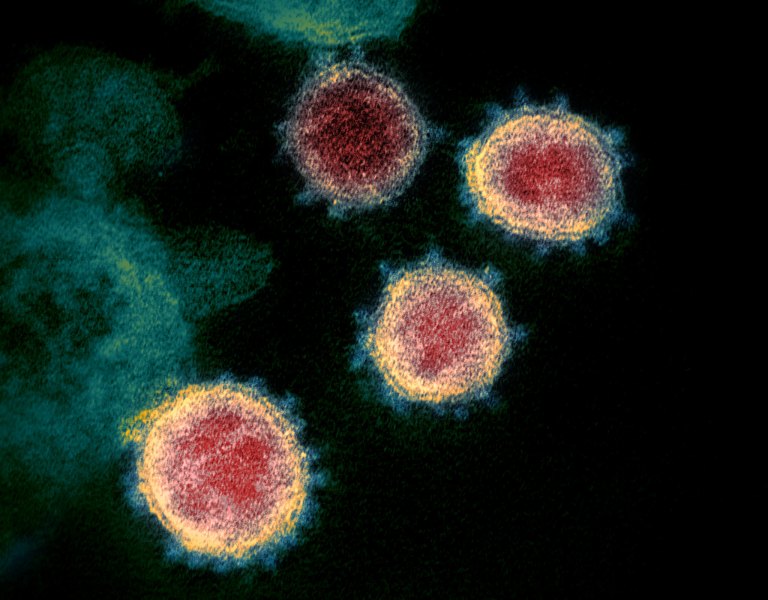Debating The Ban On Animal Testing Of Cosmetics: An Interview With Colin Mackay
The outcome is, everyone living in the European Union can spend money on cosmetics and look pretty without feeling bad for supporting animal testing.
By Chloe Cross

On March 11, a complete ban on the sale of all new cosmetics which include ingredients that have been developed using animal testing was put into place throughout the European Union by the European Commission. Animals all over EU could breathe a sigh of relief since they no longer had to live in fear of being made to wear their worst colour L’Oreal lipstick to find out if they’d come up in a rash or even worse, be impregnated only to pass the toxicity from their Dove deodorant on to their offspring, and I was happy that I no longer had to keep moaning at my flat mate for using Vaseline as lubricant every time she had sex.
By 2004 the EU had already banned the testing of completed cosmetic products and by 2009 the ban on cosmetics containing animal-tested ingredients was decided but left loopholes for certain tests. Now that these loopholes have now been filled, Sir Paul McCartney, Sienna Miller and animal rights organisation, PETA can take it easy for at least a week.
The outcome is, everyone living in the European Union can spend money on cosmetics and look pretty without feeling bad for supporting animal testing, animals are no longer the subject of unethical treatment for the sake of human vanity, and employees at cosmetic companies may no longer be destined for hell. So everyone’s happy, right?
Wrong. Cosmetics Europe, The Personal Care Association which represents more than 4,000 cosmetic companies revealed themselves to be unsupportive of the ban in a press release following the new law, so I decided to speak to Colin Mackay, the Communications Director at Cosmetics Europe about their reasons behind this.
Thought Catalog: What are Cosmetics Europe’s reasons behind supporting animal testing?
Colin Mackay: The cosmetic industry does not support animal testing. Manufacturers need to be certain their products are safe and the EU’s Cosmetics Directive sets these safety standards. Some of the safety data required under this legislation can only be obtained using animal testing. Therefore the animal tests that were carried out before March 11 were done so specifically to meet regulatory requirements. The industry did not choose the tests; they were demanded as part of the regulatory process for ingredients.
TC: You say that the ban is “doing little to improve global animal welfare”. Why do you think this is?
CM: The ban only covers the cosmetic industry, an industry that, although high profile, actually used a tiny proportion of animals. In 2008, before testing of ingredients was stopped, only 0.0125% of the animals used for experimental and other scientific purposes in the EU were used for testing cosmetic ingredients. The European Commission themselves recognise that this is an ethical ban in their communication, since it only applies to cosmetics. Animal testing for other purposes, such as pharmaceuticals or for safety data for environmental purposes will continue.
TC: You’ve also said, “by implementing the ban at this time, the European Union is jeopardising the industry’s ability to innovate.” Is this not a good example of the industry innovating?
CM: The reason it is a potential burden to innovation is because we cannot bring new products to market until we can generate safety data from non-animal alternative sources. This science is not yet available to us. There remains three areas where alternatives cannot provide this data, and ideally the legislation should have recognised this gap.
TC: What are these areas and what are the alternatives?
CM: The remaining areas where alternatives cannot provide data are contact allergy (a skin reaction resulting from exposure to allergens. Animal subjects often have the ingredients being tested applied to their shaven skin for around 28 days to see if their skin becomes inflamed), sub-chronic toxicity (the ability of a substance to cause effect for more than a year but less than a lifetime of an organism. The animal subject is tested on for 90 days or the equivalent of 10% of the animal’s life) and reproductive toxicity (a hazard associated with some chemicals that can interfere with an organism’s ability to reproduce. Typically, male and female mice are given the test substance orally before mating and the female is given a dose while pregnant. The pregnant animals are killed prior to delivery and the foetuses are examined for toxicity.)
Alternatives are under investigation for these areas but solutions are not imminent. More detailed information on the whole replacement research can be found here. The SEURAT project is part of the industry cooperation with the European Commission to find alternatives with fifty million euros in funding from within the industry and the European Commission.
TC: How about testing on cells or synthetic human body parts such as human skin model, EpiSkin or testing on human volunteers?
CM: The industry uses alternatives such as human skin models wherever possible. However skin is not the only aspect of cosmetic safety. I am not sure of the ethics of testing on humans. Certainly in pharmaceutical development human testing is only permitted after toxicity studies on animals are completed.
Surely if we utilised the 20,000 ingredients in the European Union’s database for which safety data is already available, we wouldn’t need to use and therefore test as many new ingredients?
Reformulation using existing products is an option in the short-term. However when existing ingredients come under scrutiny or the regulators ask for new safety data, we will not be able to provide that data without access to the relevant testing. Therefore they will have no choice but to withdraw the product. As a result, consumers will see products begin to disappear from the market as ingredients are removed and not replaced.
TC: So, how many cosmetic companies were selling animal tested cosmetics before the ban?
CM: All cosmetics and all companies, whatever they claim on the packaging, contain ingredients which have been tested on animals at some point. Otherwise they would not be licensed for use.
TC: What do you think will happen to the industry now that the sale of all animal tested cosmetics have been banned from being sold in the EU?
CM: The sale of cosmetics has not been banned. All current cosmetics will still be available as there is no retrospective component to the ban. If there was, then all cosmetic products would be removed from the market. All cosmetics have been animal tested [at some point]. Even those that claim to be ‘cruelty-free’ use ingredients where the safety data was generated using animal tests. Although the companies that market the products may not have commissioned the tests, it is the case that without the original data the ingredients would not be permitted. Claims or cruelty-free or animal testing free are therefore highly misleading to consumers.
TC: OK, so what do you think the implications of banning newly animal tested cosmetics in the EU will be?
CM: It’s difficult to know exactly. However it seems likely that, as manufacturers depend on a reducing pool of existing ingredients, the industry will become increasingly commoditised. The industry in Europe is the largest in the world. Sales are greater here than the US and Japan combined. The other implication is that European companies might start to access markets in China instead, where animal testing remains mandatory for cosmetics.
TC: So it seems some companies are still more interested in making money than they are concerned of a living being’s welfare. Dicks. ![]()




